What Is Strand Cast Steel?
Strand cast steel, also known as continuous cast steel or continuous casting, is a process to produce steel in a continuous manner. It is an alternative to traditional ingot casting methods, which involve the solidification of molten steel into large, rectangular-shaped molds called ingots.
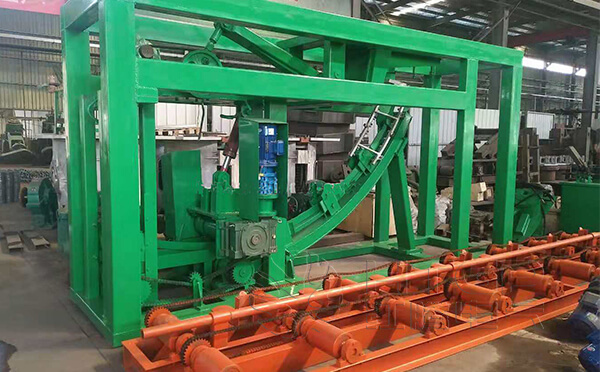
Strand Cast Steel Process
The strand casting process involves the following steps.
1. Melting
The raw materials for steel production, such as iron ore, coal, and limestone, are melted in a furnace, typically an electric arc furnace or basic oxygen furnace. The molten steel is brought to the desired composition and temperature.
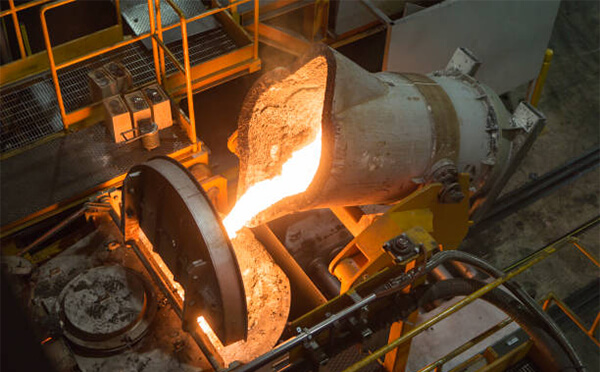
2. Continuous Casting
The molten steel is then poured into a refractory-lined ladle, which acts as a reservoir. From the ladle, the steel flows through a tundish, which helps regulate the flow, and then into a water-cooled copper mold. The mold is designed to shape the steel into a continuous strand or billet.
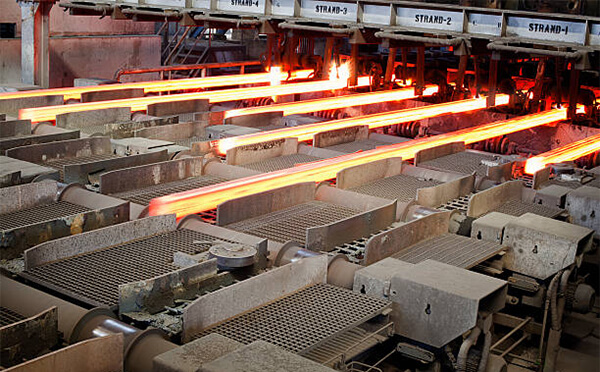
3. Solidification
As the steel flows through the mold, it begins to cool and solidify. Water is sprayed on the outer surface of the mold to accelerate the cooling process. The rapid cooling rate in continuous casting results in a fine-grained structure of the solidified steel.
4. Continuous Withdrawal
As the steel solidifies, it is continuously pulled or withdrawn from the bottom of the mold using rolls or rollers. This allows for a continuous production process, as the steel is solidified and withdrawn at a controlled rate.
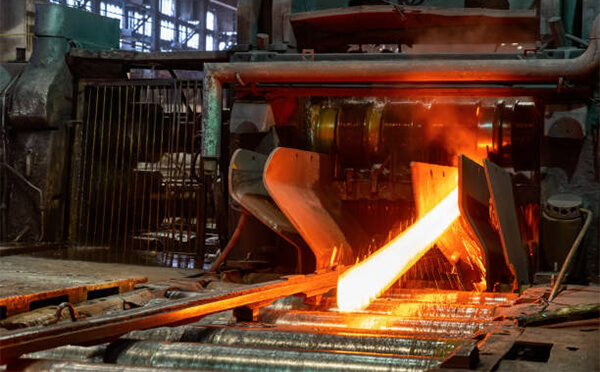
5. Cutting
Once the desired length is achieved, the continuous strand is cut into individual lengths, known as billets. These billets can then be further processed through rolling mills or other manufacturing processes to produce various steel products, such as bars, rods, or wire.
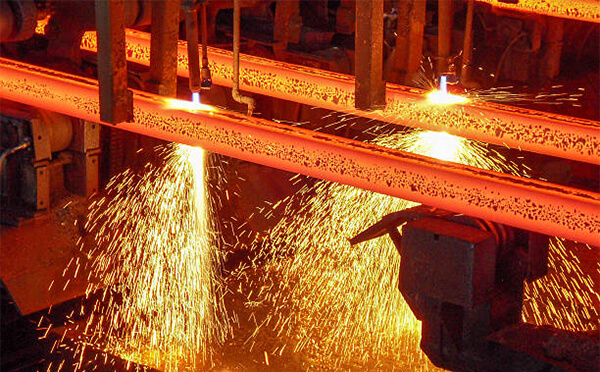
Products Produced Using Strand Cast Steel
Strand cast steel is used to produce a wide range of steel products across various industries. Some specific steel products commonly produced using the strand casting process include:
1. Billets
Continuous casting produces long, solidified strands of steel called billets. These billets serve as a raw material for further processing, such as rolling or forging, to produce various finished steel products.
2. Slabs
Slabs are large, rectangular-shaped steel plates or blocks that are commonly used as starting material for the production of flat-rolled steel products like plates, sheets, and coils. Continuous casting allows for the efficient production of slabs with consistent dimensions and improved surface quality.
3. Blooms
Blooms are intermediate steel products with a square or rectangular cross-section. They are typically used as starting material for the production of long products, such as bars, rods, and structural sections. Continuous casting enables the production of blooms with controlled dimensions and improved internal soundness.
4. Steel rounds and squares
Continuous casting is employed to produce steel rounds and squares, which are commonly used in the manufacturing of various machinery components, shafts, gears, and other precision parts. The process enables the production of solidified steel strands that can be further processed through rolling or forging to obtain the desired shapes and dimensions.
Advantages of Strand Cast Steel
Strand casting steel offers several advantages over traditional ingot casting methods. Here are some of the key advantages.
1. Continuous Process
Strand casting allows for a continuous production process, eliminating the need for frequent stops and starts associated with ingot casting. This continuous flow of steel improves production efficiency and reduces energy consumption.
2. Improved Yield
Continuous casting minimizes material waste compared to ingot casting. The process enables precise control over the length of the cast steel, resulting in minimal trimming and cropping requirements. This leads to higher yield and cost savings.
3. Enhanced Quality
The rapid solidification rate in strand casting results in a fine-grained microstructure with improved mechanical properties. The controlled cooling during continuous casting helps reduce the formation of defects, such as shrinkage cavities and porosity, resulting in higher-quality steel products.
4. Consistent Dimensions
Strand casting allows for better control over the dimensions of the cast steel products. The use of water-cooled copper molds and continuous withdrawal systems ensures uniformity in the cross-section and length of the cast steel, resulting in consistent dimensions throughout the production process.
5. Improved Surface Quality
Continuous casting produces steel products with smoother and cleaner surfaces compared to ingot casting. The water cooling in the mold helps solidify the outer layer of the steel, resulting in reduced surface defects and improved surface finish.
6. Controlled Chemical Composition
Continuous casting enables precise control over the chemical composition of the steel. By adjusting the composition of the molten steel and monitoring it during the casting process, manufacturers can achieve the desired chemical properties, ensuring consistency and meeting specific product requirements.
7. Flexibility in Product Range
Strand casting is a versatile process that can be used to produce a wide range of steel products, including billets, slabs, blooms, wire rods, seamless pipes, and more. The ability to cast different shapes and sizes allows for greater flexibility in meeting the diverse needs of various industries.
8. Cost Efficiency
The continuous nature of strand casting, along with the reduced need for subsequent reheating and refining steps, leads to cost savings in terms of energy consumption and labor requirements. Additionally, the improved yield and higher-quality products contribute to overall cost efficiency in the manufacturing process.
Overall
Strand cast steel is widely used in modern steel production thanks to its efficiency, improved quality, and versatility in manufacturing a wide range of steel products.
Additionally, the process enables better control over the chemical composition of the steel and reduces the occurrence of defects that can be present in ingot-cast steel.

